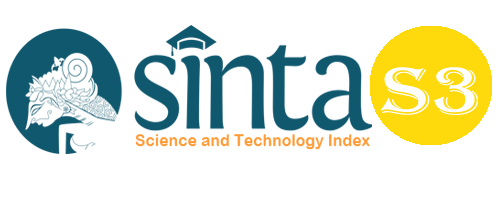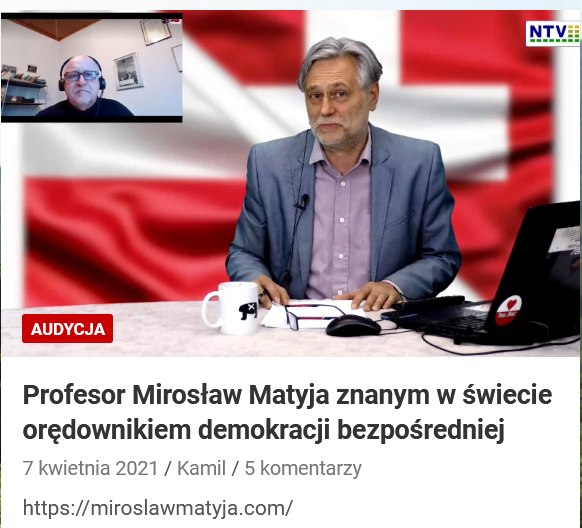Application of Electronic Certificates as a Form of Legal Protection & Land Tenure Hak
Abstract
The rapid advancement of information and communication technology should be accompanied by the most recent legal discoveries in order to balance society's increasingly complex dynamics, because if there is no law, the law would constantly lag behind the times. The government is attempting to make a new legal breakthrough with the Regulation of the Minister of Agrarian Affairs and Spatial Planning/Head of the National Land Agency Number 1 of 2021 concerning Electronic Certificates, which aims to realize the modernization of land registration to improve indicators of ease of doing business and public services to the community, while also optimizing the use of information technology and communication by implementing electronic-based land services. The research method employed in this study is normative legal research (doctrinal legal research). In this study, the approach method is statutory, that is, it is based on legislation and regulations. The study's findings reveal that the conversion of land certificates, which were formerly in the form of documents (letters), to electronic format, which has raised concerns in the community, is unwarranted because both have binding legal force under Indonesian procedural law. The Law of the Republic of Indonesia Number 19 of 2016 about Electronic Information and Transactions and the Regulation of the Minister of ATR/BPN Number 1 of 2021 concerning Electronic Certificates provide legal protection for the use of electronic certificates.
Keywords
Full Text:
PDFReferences
Agustina, E. (2021). Kajian Yuridis Program Penerbitan Sertipikat hak Atas Tanah Elektronik. Jurnal Solusi, 19(3).
Akbar, M., & Yazid, F. (2021). Kepastian Hukum Dalam Kemudahan Berusaha Di Era Revolusi Industri 4.0 Terkait Dengan Profesi Notaris. Law Jurnal, 1(2), 116-124.
Alimuddin, N. H. (2021). Implementasi Sertifikat Elektronik Sebagai Jaminan Kepastian Hukum Kepemilikan Hak Atas Tanah di Indonesia. SASI, 27(3), 335-345.
Alwajdi, M. F. (2021). Pengaturan Sertipikat Elektronik Dalam Sistem Hukum Pertanahan Dan Usaha Meningkatkan Indeks Kemudahan Berusaha Pada Masa Pandemi Covid-19. Jurnal Pertanahan, 11(1).
Arif, S. (2019). Influence of Leadership, Organizational Culture, Work Motivation, and Job Satisfaction of Performance Principles of Senior High School in Medan City. Budapest International Research and Critics Institute-Journal (BIRCI-Journal). P. 239-254
Arisaputra, M. I. (2021). Reforma agraria di Indonesia. Sinar Grafika (Bumi Aksara).
Fathoni, M. Y. (2021). Peran Hukum Adat Sebagai Pondasi Hukum Pertanahan Nasional Dalam Menghadapi Revolusi Industri 4.0. Refleksi Hukum: Jurnal Ilmu Hukum, 5(2), 219-236.
Febrianti, S. (2021). Perlindungan Hukum Terhadap Pemegang Sertipikat Hak Atas Tanah Elektronik. Indonesian Notary, 3(3).
Government Regulation No. 24 of 1997 concerning Land Registration.
Hasanah, U. (2012). Status kepemilikan tanah hasil konversi hak barat berdasarkan UU no. 5 tahun 1960 tentang peraturan dasar pokok-pokok Agraria dihubungkan dengan PP No. 24 tahun 1997 tentang pendaftaran tanah. Jurnal Ilmu Hukum, 3(1).
Law Number 5 of 1960 concerning Basic Agrarian Regulations.
Law of the Republic of Indonesia Number 19 of 2016 concerning Information and Electronic Transactions.
Mayana, R. F., & Santika, T. (2021). Legalitas Tanda Tangan Elektronik: Posibilitas Dan Tantangan Notary Digitalization Di Indonesia. ACTA DIURNAL Jurnal Ilmu Hukum Kenotariatan, 4(2), 244-262.
Milles, M. B., & Huberman, A. M. (1992). Analisis data kualitatif. Jakarta: Universitas Indonesia.
Muhammad, N., Agustian, R. A., & Salfutra, R. D. (2018). Kepastian Hukum Bagi Para Pihak Pemegang Surat Tanda Bukti Atas Tanah Berupa Sertifikat Hak Milik Ditinjau Dari Hukum Agraria. PROGRESIF: Jurnal Hukum, 12(1), 2028-2047.
Nae, F. E. (2013). Kepastian Hukum Terhadap Hak Milik atas Tanah yang Sudah Bersertifikat. Lex Privatum, 1(5).
Nafan, M. (2022). Kepastian Hukum terhadap Penerapan Sertipikat Elektronik sebagai Bukti Penguasaan Hak Atas Tanah di Indonesia. Jurnal Pendidikan Tambusai, 6(1), 3342-3355.
Niati, D. R., Siregar, Z. M. E., & Prayoga, Y. (2021). The Effect of Training on Work Performance and Career Development: The Role of Motivation as Intervening Variable. Budapest International Research and Critics Institute (BIRCI-Journal): Humanities and Social Sciences, 4(2), 2385–2393. https://doi.org/10.33258/birci.v4i2.1940
Purwaningdyah, M. W., & Wahyudi, A. (2014). Konsep dasar administrasi dan administrasi pertanahan. Jakarta: Universitas Terbuka Press.
Ramli, A. M. (2018). Dinamika Konvergensi Hukum Telematika dalam Sistem Hukum Nasional. Jurnal Legislasi Indonesia, 5(4), 1-11.
Regulation of the Minister of Agrarian Affairs and Spatial Planning/Head of the National Land Agency Number 1 of 2021 concerning Electronic Certificates.
Sappe, S., Latturete, A. I., & Uktolseja, N. (2021). Hak Pakai Atas Tanah Hak Milik dan Penyelesaian Sengketa. Batulis Civil Law Review, 2(1), 78-92.
Silviana, A. (2021). Urgensi Sertipikat Tanah Elektronik Dalam Sistem Hukum Pendaftaran Tanah di Indonesia. Administrative Law and Governance Journal, 4(1), 51-68.
Sonata, D. L. (2014). Metode Penelitian Hukum Normatif dan Empiris: Karakteristik Khas dari Metode Meneliti Hukum. Fiat Justisia Jurnal Ilmu Hukum, 8(1), 15-35.
Surdin, J. (2016). Analisis kelayakan implementasi e-government dalam pelayanan publik di bidang keagrariaan di kabupaten pinrang. KAREBA: Jurnal Ilmu Komunikasi, 178-191.
Sutedi, A. (2007). Peralihan hak atas tanah dan pendaftarannya. Jakarta: Sinar grafika.
Wiryana, L. H. (2021). Analisis Swot Sertifikat Elektronik Terhadap Penyelesaian Sengketa Pertanahan di Indonesia. Jurnal Hukum Adigama, 4(2), 4392-4410.
DOI: https://doi.org/10.33258/birci.v5i3.6975
Article Metrics
Abstract view : 17 timesPDF - 10 times
Refbacks
- There are currently no refbacks.

This work is licensed under a Creative Commons Attribution-ShareAlike 4.0 International License.

This work is licensed under a Creative Commons Attribution-ShareAlike 4.0 International License.

_.gif)

















_.gif)



